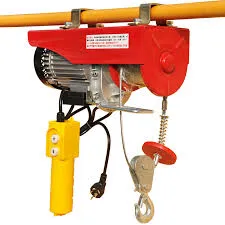


Lever Chain A Revolutionary Approach in Mechanical Engineering
In the realm of mechanical engineering, efficiency and precision are paramount. Among the myriad components that contribute to these goals, the lever chain stands out as a revolutionary element that redefines how forces are transmitted and controlled in various applications. This article delves into the concept of the lever chain, its operational principles, and its significant implications across different industries.
Understanding the Lever Chain
At its core, a lever chain is a mechanical assembly that utilizes levers and chains to transmit motion and force. It operates based on the principles of leverage, where a small force applied to one end of the lever can lift or move a heavier load on the other end. The chain component ensures that this motion is smooth and efficient, reducing friction and wear, which are common issues in traditional mechanical systems.
Components of a Lever Chain
A lever chain typically consists of several key components
1. Levers These are rigid bars that pivot around a fixed point, known as the fulcrum. The position of the fulcrum, as well as the lengths of the levers on either side, determines the mechanical advantage. By adjusting these parameters, engineers can optimize the force applied.
2. Chains The chains in a lever chain mechanism serve to transmit the motion generated by the levers. They can be made from a variety of materials, including steel, plastic, or composite materials, depending on the application’s requirements. Chains reduce the need for constant lubrication and maintenance, making them a preferred choice in many settings.
3. Connecting Components Various connectors, joints, and brackets maintain the structural integrity of the system while allowing for the necessary movement between levers and chains.
Operational Principles
The efficiency of a lever chain lies in the way it harnesses mechanical advantage. According to the principles established by Archimedes, a lever can amplify an input force to lift heavier loads. By incorporating chains into this system, the ability to transfer this amplified force over distances increases significantly. The combined system minimizes energy loss and enhances the speed of operation, making it suitable for applications ranging from industrial machinery to robotics.

Applications Across Industries
The versatility of lever chains makes them invaluable across numerous sectors
- Manufacturing In automated assembly lines, lever chains can be used to control robotic arms that perform complex tasks with precision and speed. They allow for the quick assembly of parts while maintaining the strength needed for heavy components.
- Automotive In vehicles, lever chains are employed in various systems, from changing gears to elevating car frames during assembly. This efficiency reduces manufacturing times and enhances overall vehicle performance.
- Construction Lever chains are crucial in cranes and lifting equipment. They enable operators to raise and lower heavy materials with ease, relying on the mechanical advantage they provide.
- Medical Devices In the medical field, lever chains play a role in the design of surgical instruments and hospital equipment, enabling the delicate handling of patients and precise operations in challenging environments.
Advantages and Future Prospects
The advantages of lever chains extend beyond mere efficiency. They offer reduced operational costs, lower energy consumption, and decreased wear and tear on components. As technology progresses, the integration of smart materials and sensors may further enhance the capabilities of lever chains, allowing for real-time adjustments based on operational demands.
Innovations in materials science could lead to the development of lighter, stronger chains that withstand greater forces, while the incorporation of artificial intelligence could allow for more adaptive systems that optimize performance autonomously.
Conclusion
In conclusion, the lever chain represents a significant advancement in mechanical engineering, offering numerous benefits across various sectors. As industries continue to evolve and demand higher efficiency and precision, the lever chain’s role will only become more critical. By understanding and leveraging this powerful mechanical principle, engineers can design systems that not only meet the challenges of today but also pave the way for future innovations. The continued exploration of lever chains serves as a testament to the ingenuity of mechanical engineering and its capacity to adapt and improve in an ever-changing technological landscape.



